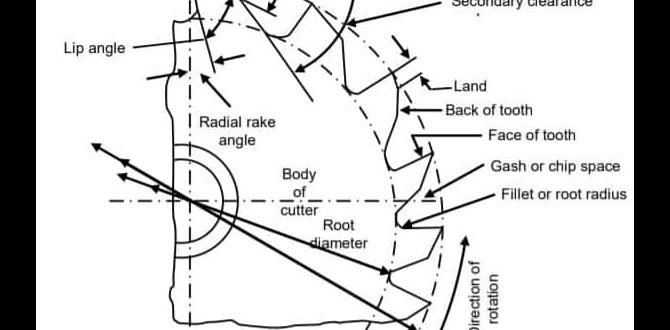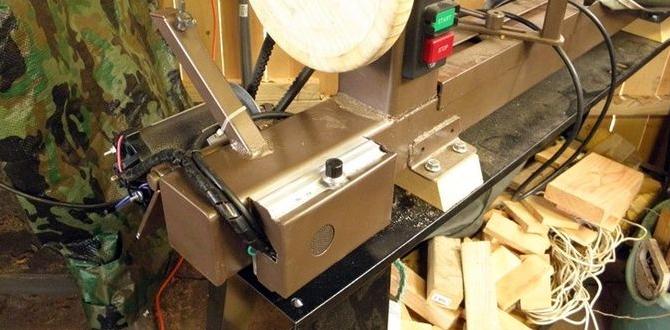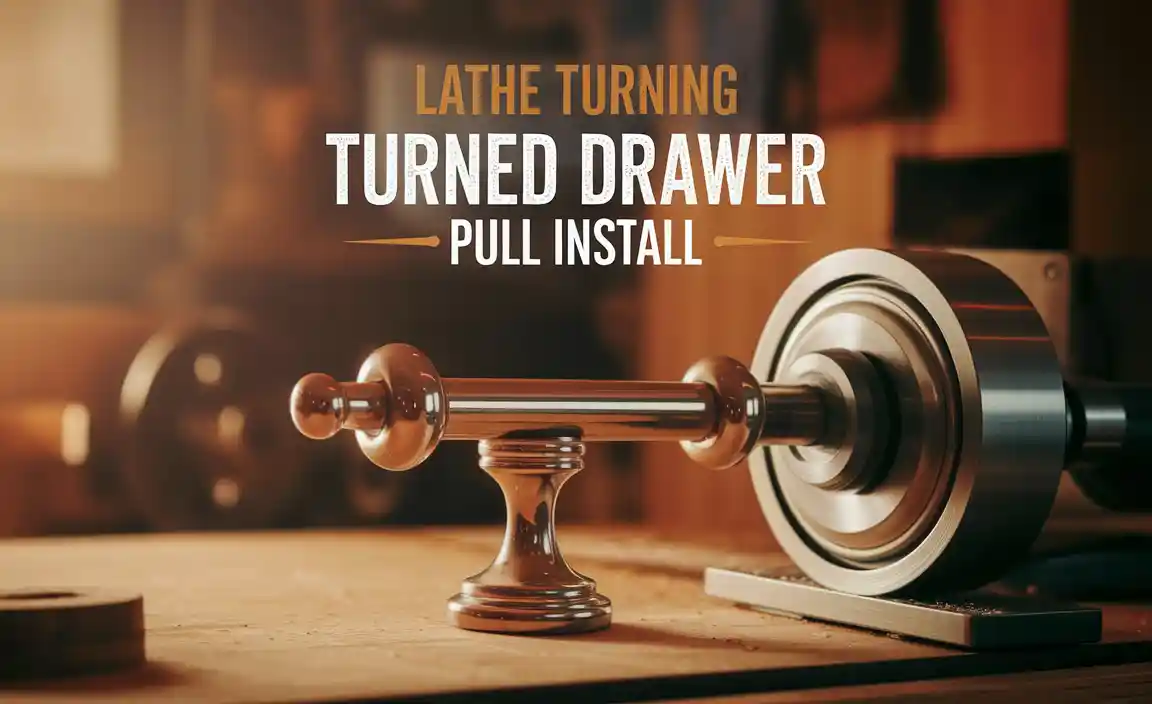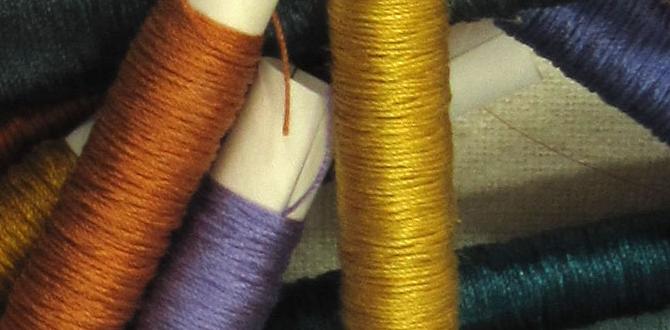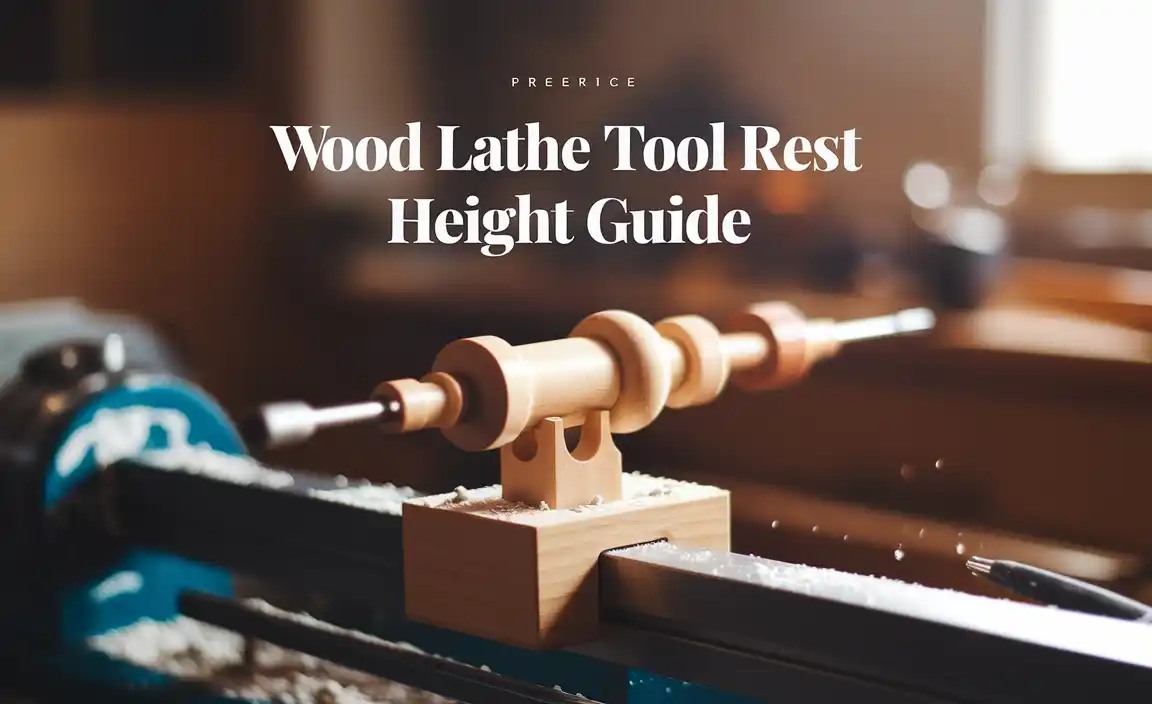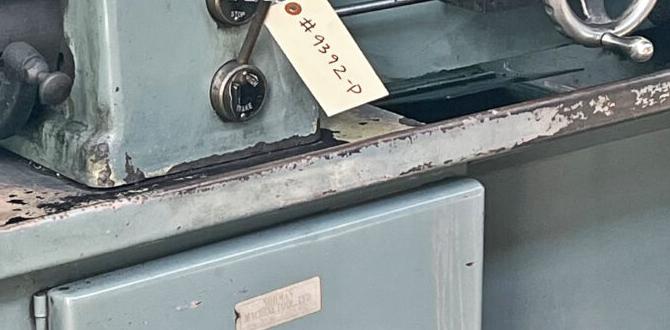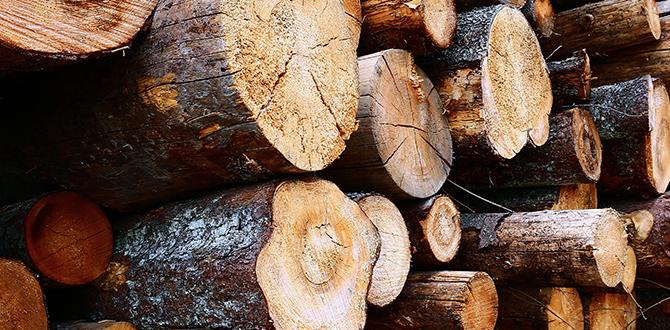Imagine you’re in a workshop filled with whirring machines. One of those machines, the metal lathe, helps create perfect parts for various projects. But what if it isn’t working accurately? That’s where lathe calibration comes into play.
Calibrating a lathe ensures it shapes materials correctly. It’s like tuning a musical instrument, making sure every note sounds just right. Do you know how crucial the compound rest is in this process? This small part helps set the angles for precise cuts. Without it being calibrated well, your work could end up uneven or imprecise.
Did you know that even a tiny mistake in calibration can lead to big problems in your finished product? In this article, we will explore how to ensure your metal lathe and its compound rest are always ready for action. The right calibration will spark your creativity and enhance your projects. Let’s dive in and discover the secrets of perfect lathe calibration!
Lathe Calibration: Ensuring Accuracy In Metal Lathe Compound Rest When It Comes To Maximizing The Performance And Accuracy Of A Metal Lathe, Calibration Is Essential. Among The Various Components That Require Calibration, The Compound Rest Plays A Crucial Role. Properly Calibrating The Lathe Ensures That The Workpiece Is Processed Accurately, Allowing For Precise Cuts And Finishes. In This Article, We Will Discuss The Importance Of Lathe Calibration, Specifically Focusing On The Metal Lathe Compound Rest, The Processes Involved, And Best Practices To Maintain Accurate Performance. Importance Of Calibrating The Compound Rest The Compound Rest Of A Metal Lathe Is Used For Angular Cuts And Simple Milling Operations. If It Is Not Correctly Calibrated, Even Minor Inaccuracies Can Lead To Significant Issues In The Final Workpiece, Affecting Overall Quality And Functionality. Steps To Calibrate The Metal Lathe Compound Rest 1. **Check The Leveling**: Ensure The Lathe Itself Is Level. An Unlevel Lathe Can Lead To Incorrect Angles During Operation. 2. **Inspect The Compound Rest**: Examine The Compound Rest For Any Wear And Tear. Ensure All Moving Parts Are Lubricated And Free From Dust Or Debris. 3. **Align The Cross Slide**: The Cross Slide Must Be Perpendicular To The Lathe’S Bed. A Misalignment Here Can Significantly Impact The Accuracy Of Your Cuts. 4. **Use A Dial Indicator**: To Calibrate The Compound Rest Accurately, Use A Dial Indicator To Measure The Angles. Adjust The Rest Based On These Measurements. 5. **Conduct Test Cuts**: After Calibrating, Perform Test Cuts On Scrap Metal To Ensure That The Adjustments Yield The Desired Accuracy. Best Practices For Maintaining Calibration 1. **Regular Inspections**: Schedule Regular Inspections To Check The Calibration Of The Compound Rest, Especially If The Lathe Is Used Frequently. 2. **Document Settings**: Keep A Log Of Calibration Settings And Adjustments To Make Tracking Discrepancies Easier. 3. **Utilize Quality Tools**: Invest In High-Quality Calibration Tools And Indicators For Better Accuracy. 4. **Stay Informed**: Keep Up With The Latest Calibration Techniques And Best Practices In Metalworking. Conclusion Lathe Calibration Is A Fundamental Aspect Of Metalworking, Especially Regarding The Compound Rest Of A Metal Lathe. By Ensuring That These Components Are Regularly Calibrated And Maintained, You Can Enhance The Overall Performance Of Your Lathe, Leading To Precision In Your Machining Projects. Proper Calibration Not Only Saves Time And Materials But Also Improves The Quality Of The Final Product, Making It Essential For Anyone Serious About Their Metalworking Skills.
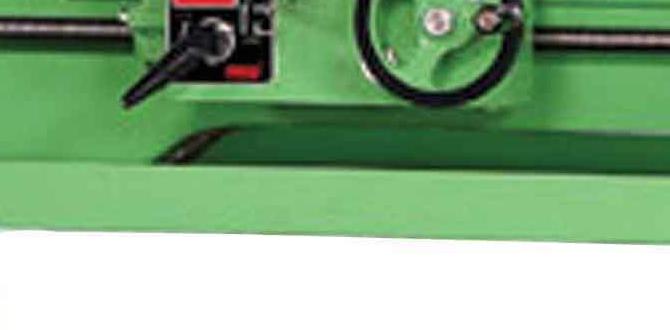
Understanding Lathe Calibration for Metal Lathes
Lathe calibration is crucial for precision in metalworking. The compound rest plays a vital role in accurately positioning the cutting tool. Proper calibration ensures smooth operation and prevents errors. Did you know that even a tiny misalignment can lead to poor results? Regular adjustments and checks keep your lathe running efficiently. This practice boosts not only the quality of the finished product but also your skills as a machinist. Happy turning!Components of a Metal Lathe
Description of the main parts of a metal lathe, focusing on the compound rest.. Explanation of the role of the compound rest in the calibration process..A metal lathe has several important parts that work together. One key part is the compound rest. This piece sits on the cross slide. It allows the cutting tool to move at different angles. You can adjust it, making it easier to shape the metal. The compound rest is vital during calibration. It ensures that cuts are accurate and precise.
What is the role of the compound rest in calibration?
The compound rest plays a crucial role in calibration. It helps to set the right angle for the tool. This accuracy leads to better finished pieces. Without it, the workpiece could be uneven.
Tools Required for Calibration
List of essential tools for calibrating a metal lathe.. Recommendations for precision measuring instruments and gauges..To calibrate a metal lathe, you need the right tools. Here’s a list of essential items:
- Caliper
- Micrometer
- Dial indicator
- Feeler gauges
- Straightedge
These tools help measure distance and ensure everything is level. A dial indicator is great for checking small movements. Micrometers are perfect for measuring thickness. Investing in quality tools will make a big difference.
What tools do I need for metal lathe calibration?
For effective calibration, use tools like calipers, micrometers, and dial indicators. These help you get accurate measurements and ensure the lathe operates correctly.
Step-by-Step Calibration Process
Detailed instructions on calibrating the lathe with a focus on the compound rest adjustment.. Key measurements to take during the calibration process..Calibrating a lathe is like giving your machinery a spa day! First, check your compound rest. Make sure it’s leveled; a tilting rest is like a roller coaster—fun but not safe for machining!
Use a dial indicator to measure the alignment. Adjust the rest by loosening the bolts if it’s off. Tighten them back up and repeat the measurement. Don’t forget, precision is essential! Each measurement matters, like counting jellybeans in a jar!
| Measurement Step | Details |
|---|---|
| Check Level | Use a level tool for alignment. |
| Dropping Indicator | Place it to check measurements. |
| Tighten Screws | Fix any misalignments carefully. |
Remember, a well-calibrated lathe can save you from funky surprises in your projects!
Common Calibration Issues and Solutions
Identification of frequent calibration problems encountered with metal lathes.. Effective troubleshooting tips and methods to resolve these issues..Metal lathes can sometimes act like moody cats. Common issues include misalignment, which makes your cuts uneven. Checking the compound rest is key; it often decides if your work will be smooth or jagged. Then there’s the problem of wear and tear. A little rust can throw off your mighty machine!
| Issue | Solution |
|---|---|
| Misalignment | Recalibrate the compound rest and check settings. |
| Wear and Tear | Clean and lubricate parts regularly. |
For a quick fix, tighten loose screws and reset your tools. Remember, a well-kept lathe is a happy lathe! Always have a cup of coffee ready; you never know when it’ll need a pep talk.
Benefits of Regular Lathe Calibration
Discussion on how regular calibration improves machining accuracy and efficiency.. Longterm advantages of maintaining a wellcalibrated lathe..Keeping a lathe well-calibrated is like having your coffee just right; it makes everything better! Regular calibration boosts machining accuracy, meaning your parts will fit together snugly. Imagine trying to put together a puzzle with pieces that don’t match—frustrating, right? Plus, a properly calibrated lathe works more efficiently, saving time and energy. Over time, this can lead to fewer repairs and longer tool life. So, treat your lathe to a little TLC! Your future self will thank you!
| Benefits | Details |
|---|---|
| Improved Accuracy | Snug fits for parts, less fuss. |
| Increased Efficiency | Saves time and energy while working. |
| Long-term Savings | Fewer repairs and tool replacements. |
Maintenance Best Practices for Lathe Calibration
Tips to maintain the compound rest and other components for optimal calibration.. Suggested routine checks to ensure ongoing accuracy in lathe operations..| Routine Check | Tip |
|---|---|
| Inspect compound rest | Keep it clean and free of debris. |
| Test alignment | Use a dial gauge for accuracy. |
| Lubrication | Oil regularly for smooth moves! |
For smooth lathe operations, maintaining the compound rest and other parts is key. Check for dirt and dust, as they can throw off your calibration. Every so often, use a dial gauge to ensure everything is straight. Don’t forget the oil! A little lubrication can turn your lathe into a happy machine. Regular checks help prevent surprises. After all, nobody wants a “lathe-aster” on their hands!
Conclusion
In conclusion, calibrating the compound rest on your metal lathe is important for accurate work. You can check levels, adjust settings, and ensure precision. Regular calibration improves your projects and builds skill. Remember to practice these steps often. For more tips, consider reading guides or watching tutorials. Let’s keep our lathes sharp and our projects successful!FAQs
Sure! Here Are Five Questions Related To Lathe Calibration, Specifically Focusing On The Metal Lathe Compound Rest.Sure! A metal lathe is a machine that helps shape metal. The compound rest is a part that allows you to move the tool in different directions. To calibrate it, we make sure everything is straight and level. This helps you cut better shapes and makes your work easier and safer. Checking it regularly keeps your lathe in good shape!
Sure! Please provide me with the question you would like me to answer.
What Are The Key Steps In Calibrating The Compound Rest Of A Metal Lathe To Ensure Accurate Cutting Angles?To calibrate the compound rest on a metal lathe, follow these steps. First, make sure the lathe is turned off and safe to touch. Next, use a square to check if the rest is flat and level. Then, adjust the angle to match your cutting needs by loosening the handle and moving it carefully. Finally, tighten the handle back up to hold the angle steady for accurate cuts.
How Can You Check For And Adjust Backlash In The Compound Rest Of A Metal Lathe?To check for backlash, you can move the handle of the compound rest. First, turn it one way and see if the tool moves. Then, turn it back and see if it moves the same distance. If it doesn’t, there’s backlash. To adjust it, look for a screw that controls the play. You can tighten it a little bit. This helps make your cuts more accurate. Always check again after you adjust it.
What Tools Are Essential For Properly Calibrating The Compound Rest On A Metal Lathe?To calibrate the compound rest on a metal lathe, you’ll need a few important tools. First, use a machine level to check if it’s flat. A dial indicator helps you measure very small movements accurately. A square tool can make sure everything is set at the right angles. Finally, a wrench will help you tighten any loose parts.
How Does Improper Calibration Of The Compound Rest Affect The Overall Accuracy Of Machining Operations On A Metal Lathe?If the compound rest on a metal lathe is not set up correctly, your cuts can be off. This means the pieces might not fit together well, or they could be the wrong size. You might need to redo your work, wasting time and materials. Always check the compound rest to make sure it’s right before you start. It helps you make better parts that work well together!
What Common Issues Can Arise During The Calibration Process Of A Compound Rest, And How Can They Be Resolved?During the calibration of a compound rest, you might see problems like incorrect measurements or loose parts. First, check if all the pieces are tightly fitted. Then, make sure you measure things in the right way. If it still doesn’t work, try adjusting the settings a little at a time. This will help you find the right position and fix the issue!
{“@context”:”https://schema.org”,”@type”: “FAQPage”,”mainEntity”:[{“@type”: “Question”,”name”: “Sure! Here Are Five Questions Related To Lathe Calibration, Specifically Focusing On The Metal Lathe Compound Rest.”,”acceptedAnswer”: {“@type”: “Answer”,”text”: “Sure! A metal lathe is a machine that helps shape metal. The compound rest is a part that allows you to move the tool in different directions. To calibrate it, we make sure everything is straight and level. This helps you cut better shapes and makes your work easier and safer. Checking it regularly keeps your lathe in good shape!”}},{“@type”: “Question”,”name”: “”,”acceptedAnswer”: {“@type”: “Answer”,”text”: “Sure! Please provide me with the question you would like me to answer.”}},{“@type”: “Question”,”name”: “What Are The Key Steps In Calibrating The Compound Rest Of A Metal Lathe To Ensure Accurate Cutting Angles?”,”acceptedAnswer”: {“@type”: “Answer”,”text”: “To calibrate the compound rest on a metal lathe, follow these steps. First, make sure the lathe is turned off and safe to touch. Next, use a square to check if the rest is flat and level. Then, adjust the angle to match your cutting needs by loosening the handle and moving it carefully. Finally, tighten the handle back up to hold the angle steady for accurate cuts.”}},{“@type”: “Question”,”name”: “How Can You Check For And Adjust Backlash In The Compound Rest Of A Metal Lathe?”,”acceptedAnswer”: {“@type”: “Answer”,”text”: “To check for backlash, you can move the handle of the compound rest. First, turn it one way and see if the tool moves. Then, turn it back and see if it moves the same distance. If it doesn’t, there’s backlash. To adjust it, look for a screw that controls the play. You can tighten it a little bit. This helps make your cuts more accurate. Always check again after you adjust it.”}},{“@type”: “Question”,”name”: “What Tools Are Essential For Properly Calibrating The Compound Rest On A Metal Lathe?”,”acceptedAnswer”: {“@type”: “Answer”,”text”: “To calibrate the compound rest on a metal lathe, you’ll need a few important tools. First, use a machine level to check if it’s flat. A dial indicator helps you measure very small movements accurately. A square tool can make sure everything is set at the right angles. Finally, a wrench will help you tighten any loose parts.”}},{“@type”: “Question”,”name”: “How Does Improper Calibration Of The Compound Rest Affect The Overall Accuracy Of Machining Operations On A Metal Lathe?”,”acceptedAnswer”: {“@type”: “Answer”,”text”: “If the compound rest on a metal lathe is not set up correctly, your cuts can be off. This means the pieces might not fit together well, or they could be the wrong size. You might need to redo your work, wasting time and materials. Always check the compound rest to make sure it’s right before you start. It helps you make better parts that work well together!”}},{“@type”: “Question”,”name”: “What Common Issues Can Arise During The Calibration Process Of A Compound Rest, And How Can They Be Resolved?”,”acceptedAnswer”: {“@type”: “Answer”,”text”: “During the calibration of a compound rest, you might see problems like incorrect measurements or loose parts. First, check if all the pieces are tightly fitted. Then, make sure you measure things in the right way. If it still doesn’t work, try adjusting the settings a little at a time. This will help you find the right position and fix the issue!”}}]}
